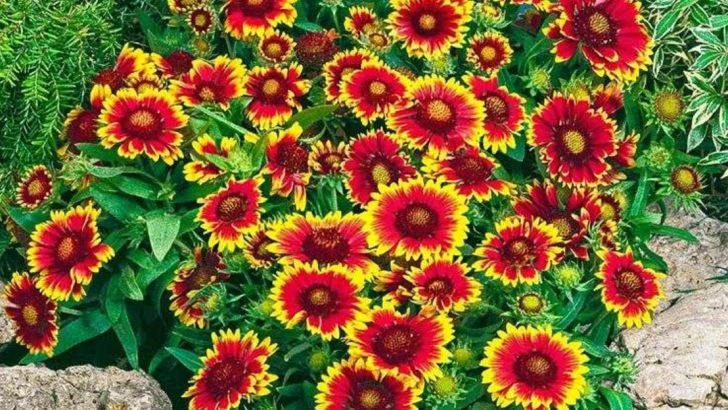Coastal Maine’s sandy soils, salty breezes, and fluctuating temperatures can present unique challenges for gardeners—but with the right plant choices, these conditions can be turned into an opportunity to grow resilient, beautiful blooms that thrive in this rugged environment.
From the cheerful beach rose (Rosa rugosa) to the delicate charm of sea thrift and the enduring black-eyed Susan, these flowers are not only tolerant of sandy, well-drained soils, but many are also salt-resistant, wind-hardy, and perfect for attracting local pollinators. Their low-maintenance nature makes them ideal for both cottage gardens and wild, coastal landscapes.
Explore these 17 coastal-tough flowers that flourish in sandy soil and discover how to create a colorful, thriving garden in Maine’s seaside climate.
Beach Rose (Rosa rugosa)

Rosa rugosa, known for its tenacity, thrives amidst coastal breezes and sandy dunes. With fragrant pink or white blooms, it adds beauty to any seaside garden. Its ability to withstand salt spray makes it a favorite along Maine’s shores. Rugged and resilient, this rose blooms from late spring to early fall. Its dense foliage provides shelter for small wildlife, while its rose hips are a food source for birds. Considered low maintenance, it’s ideal for erosion control, creating a natural barrier against the elements.
Sea Lavender (Limonium carolinianum)
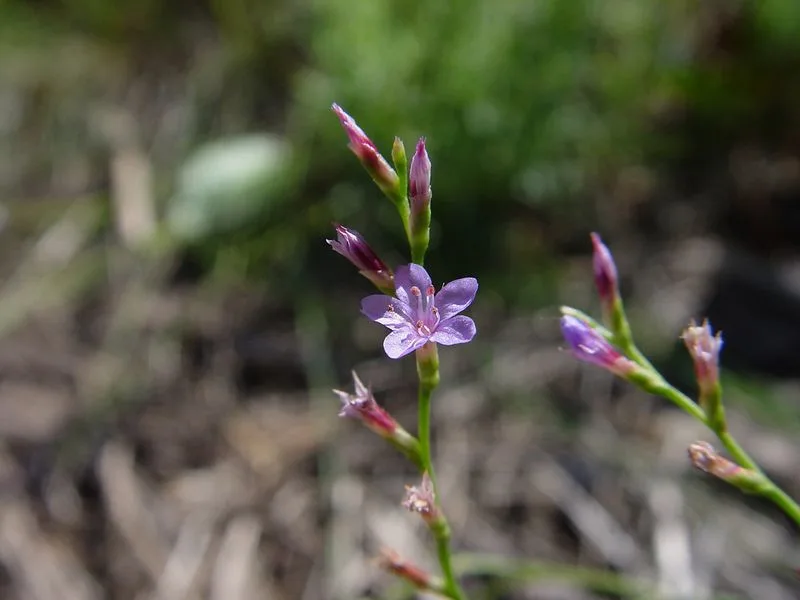
Sea Lavender captivates with its delicate clusters of lavender-blue flowers. This perennial adds a subtle charm to coastal gardens. Flourishing in salty sands, its airy stems sway gracefully in the ocean breeze. Perfect for cut flower arrangements, it retains color even when dried. Its long flowering season extends summer’s beauty into fall. Tolerant of drought and poor soils, it requires minimal care. Beyond aesthetics, it plays a role in local ecosystems, supporting pollinators and enhancing biodiversity.
Dusty Miller (Senecio cineraria)
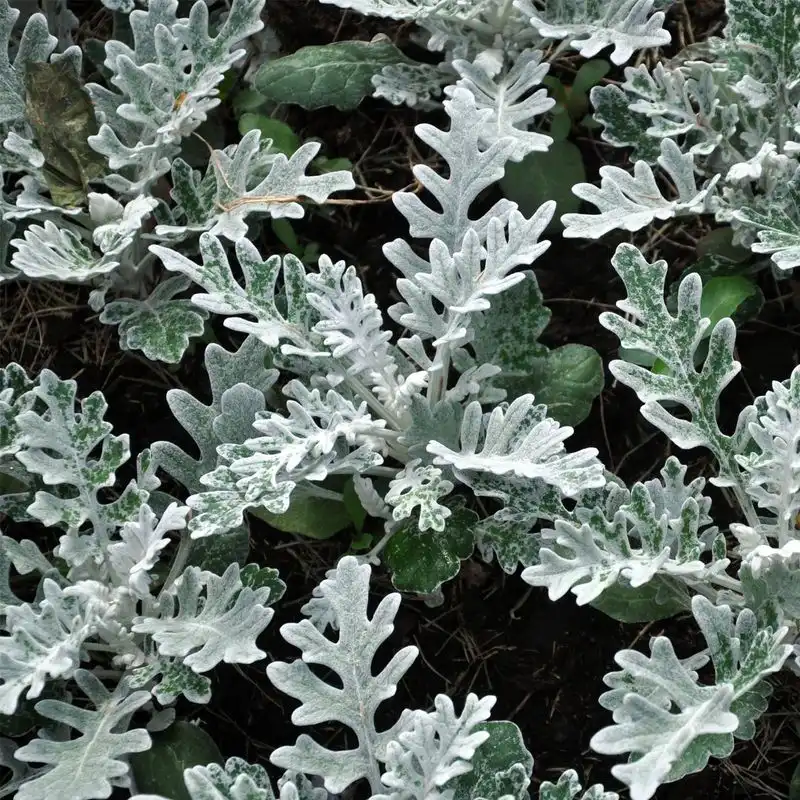
Dusty Miller’s silver foliage adds texture and contrast to floral displays. Known for its drought tolerance, it thrives in sandy soils, making it ideal for Maine’s coastal gardens. Its soft, velvety leaves catch the eye, providing a striking backdrop for more colorful blooms. Easy to grow, this hardy plant withstands both heat and salt, demanding little maintenance. Often used in borders, it complements a variety of garden styles. Its understated elegance and resilience make it a coastal favorite.
Beach Pea (Lathyrus japonicus)

Beach Pea brings a splash of color with its cheerful purple blossoms. This trailing perennial is well-suited to sandy habitats, often found clinging to dunes. It spreads easily, creating a lush carpet of greenery. Its sweet-scented flowers attract bees and butterflies, enhancing the coastal ecosystem. Adapted to salty conditions, it’s a robust choice for seaside gardening. Hardy and low-maintenance, it requires little more than the occasional trim. Its vibrant presence adds life to any coastal scene.
Black-eyed Susan (Rudbeckia hirta)
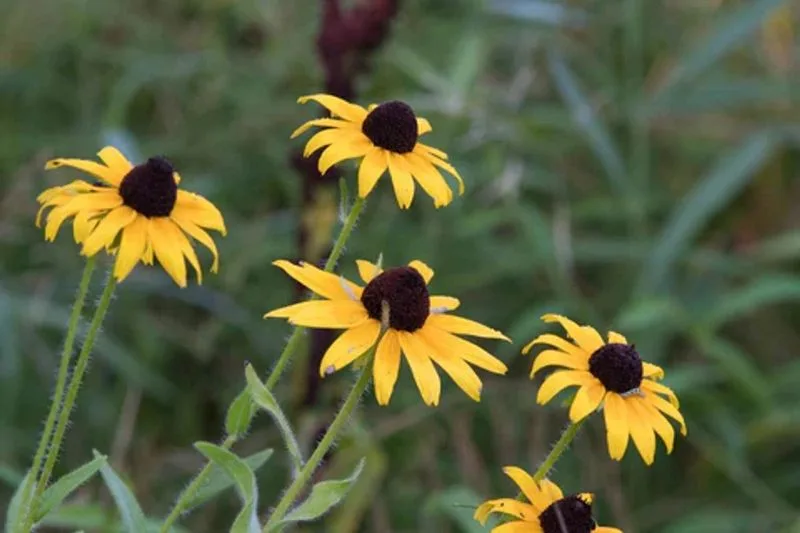
Black-eyed Susan showcases bright yellow petals with a striking dark center, bringing warmth to sandy coastal areas. Known for its adaptability, it thrives in poor soils, including sandy ones. This native wildflower blooms from summer to fall, attracting pollinators like bees and butterflies. Its cheerful appearance can liven up any garden, providing continuous blooms through warmer months. Easy to care for, it’s perfect for gardeners seeking low-effort beauty along Maine’s coast. Its resilience ensures a lasting display.
Sea Thrift (Armeria maritima)
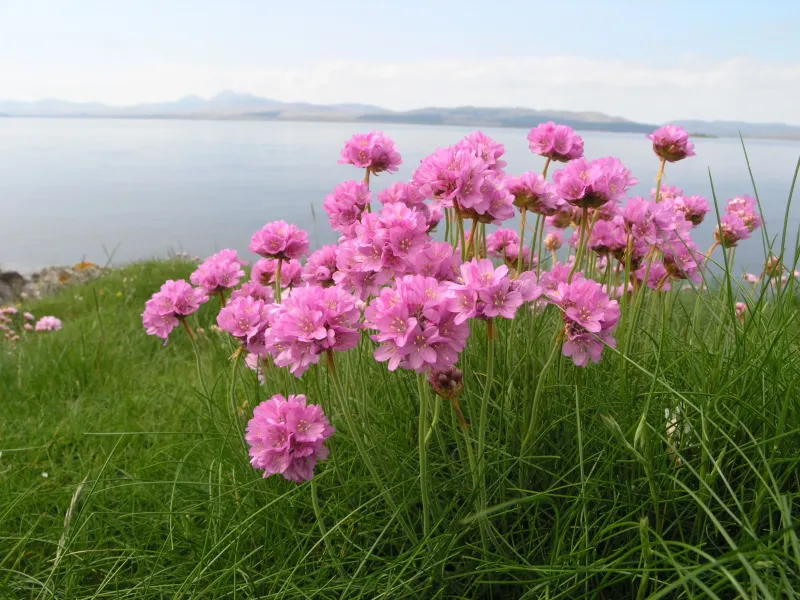
Sea Thrift, with its charming pink pom-pom flowers, dots the coastal landscape with whimsy. This compact perennial thrives in sandy, rocky soils, perfectly suited to Maine’s seaside. Its evergreen foliage forms neat clumps, providing year-round interest. Ideal for borders and rockeries, it brings texture and color to any garden. Low-growing and tolerant of harsh winds, it requires minimal upkeep. A favorite among coastal gardeners for its ability to withstand salty conditions while enhancing visual appeal.
Blanket Flower (Gaillardia)
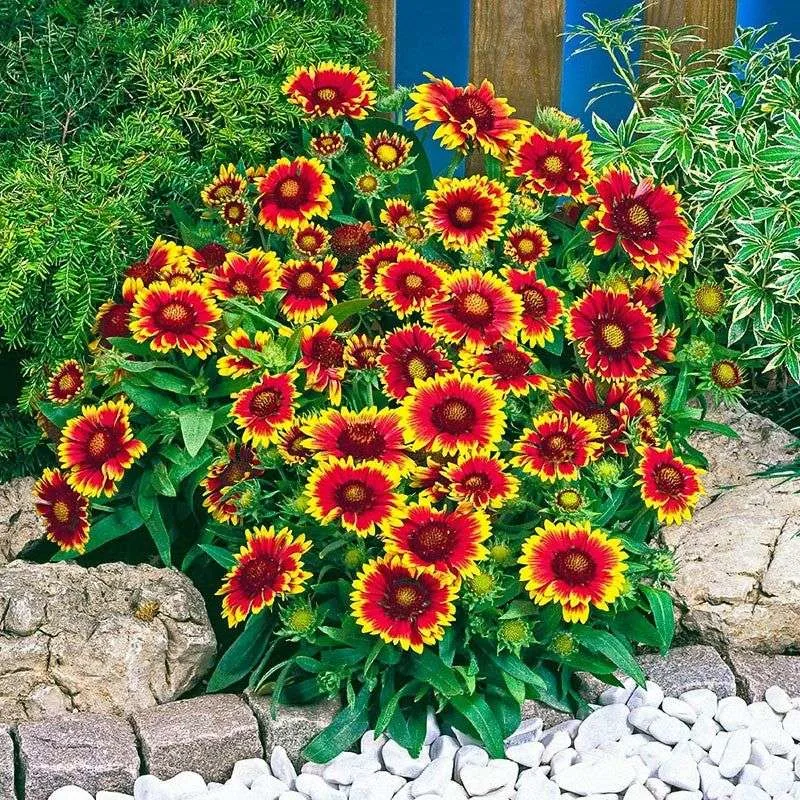
Blanket Flower dazzles with fiery red and yellow blooms, embodying the warmth of summer. A hardy perennial, it flourishes in sandy soils, inviting pollinators to the garden. Its long-lasting flowers provide a splash of color from early summer into autumn. Drought-tolerant and resilient, it’s well-suited to coastal conditions. Minimal care is needed, making it an excellent choice for busy gardeners. These vibrant flowers can brighten up any space, offering a burst of energy and life to the sandy seaside.
Lanceleaf Coreopsis (Coreopsis lanceolata)
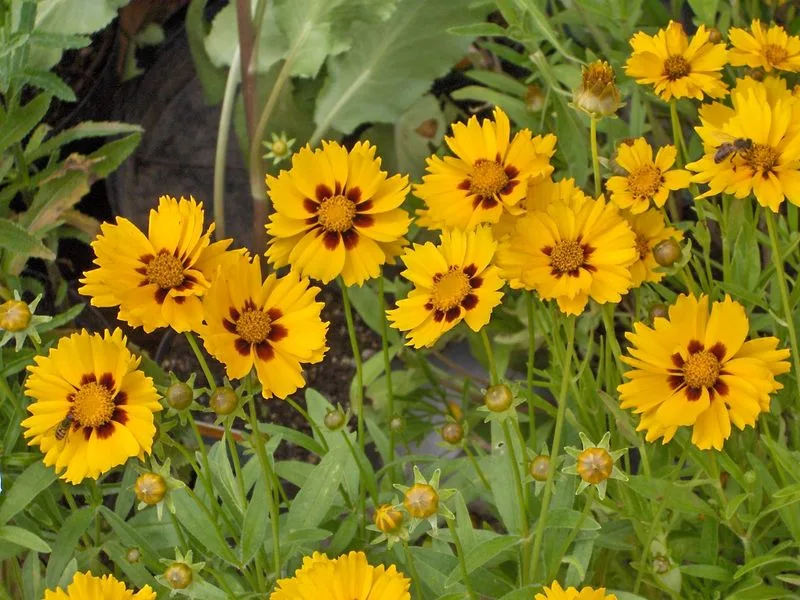
Lanceleaf Coreopsis stands out with its sunny yellow flowers, a beacon of cheer in coastal gardens. Flourishing in sandy, well-drained soils, it’s perfectly suited to Maine’s seaside conditions. Blooms appear in late spring, continuing to grace gardens through early summer. Its bright flowers attract bees and butterflies, supporting local biodiversity. Hardy and low-maintenance, it’s ideal for gardeners seeking effortless beauty. Tolerant of drought and poor soil, it remains a reliable and enduring choice for coastal landscapes.
Purple Coneflower (Echinacea purpurea)
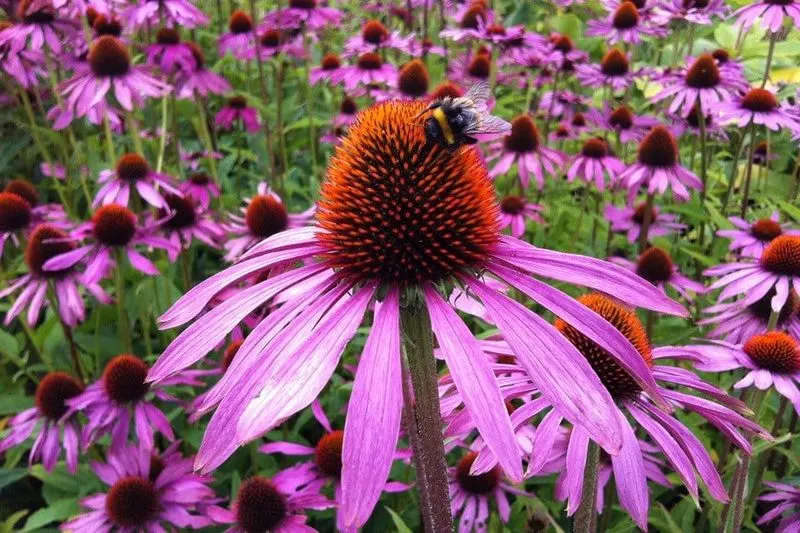
Purple Coneflower captivates with its striking pink-purple petals and distinctive spiky centers. Thriving in sandy soils, it’s a favorite for coastal gardens. This perennial blooms from midsummer to fall, providing continuous color. Beyond aesthetics, it offers medicinal benefits, historically used for immune support. It attracts butterflies and birds, enhancing the garden’s vitality. Known for its adaptability, it’s resilient against drought and poor soil conditions. Low-maintenance and hardy, it makes a vibrant addition to any landscape.
Sea Oats (Uniola paniculata)

Sea Oats lend a graceful touch to coastal landscapes with their delicate seed heads swaying in the breeze. Perfectly adapted to sandy soils, they play a crucial role in stabilizing dunes. This ornamental grass enhances the natural beauty of Maine’s shorelines. Its golden hues shift with the seasons, offering year-round interest. Beyond aesthetics, Sea Oats provide habitat for wildlife and help prevent erosion. Their resilience and beauty make them a favorite among conservationists and gardeners alike.
Butterfly Weed (Asclepias tuberosa)
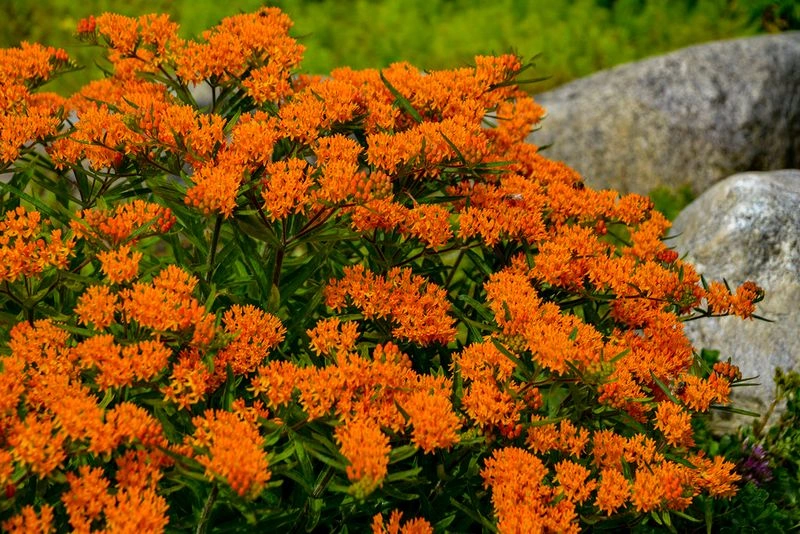
Butterfly Weed, with its vivid orange blooms, is a magnet for pollinators. Thriving in sandy soils, it’s an essential plant for coastal gardens. This perennial adds a burst of color and supports local ecosystems by attracting butterflies and bees. Blooms appear from late spring to early fall, providing extended beauty. Low-maintenance and hardy, it requires little care once established. Its deep roots help prevent erosion, making it a practical choice for sandy landscapes. An indispensable addition to wildlife-friendly gardens.
Beach Heather (Hudsonia tomentosa)
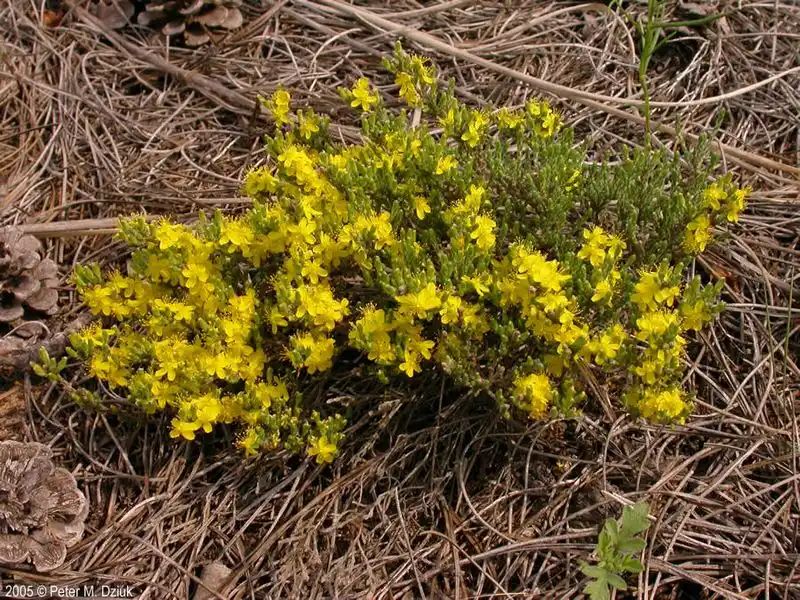
Beach Heather, with its low-growing form and small yellow blossoms, thrives in sandy soils along the coast. It forms dense mats, helping to stabilize dunes and prevent erosion. Its adaptability to harsh, salty conditions makes it a valuable plant for coastal landscapes. This evergreen shrub provides year-round interest, with its silver-green foliage contrasting against the yellow blooms. It requires minimal maintenance, ideal for naturalistic gardens. Beach Heather’s resilience and ecosystem benefits make it a coastal favorite.
Seaside Goldenrod (Solidago sempervirens)
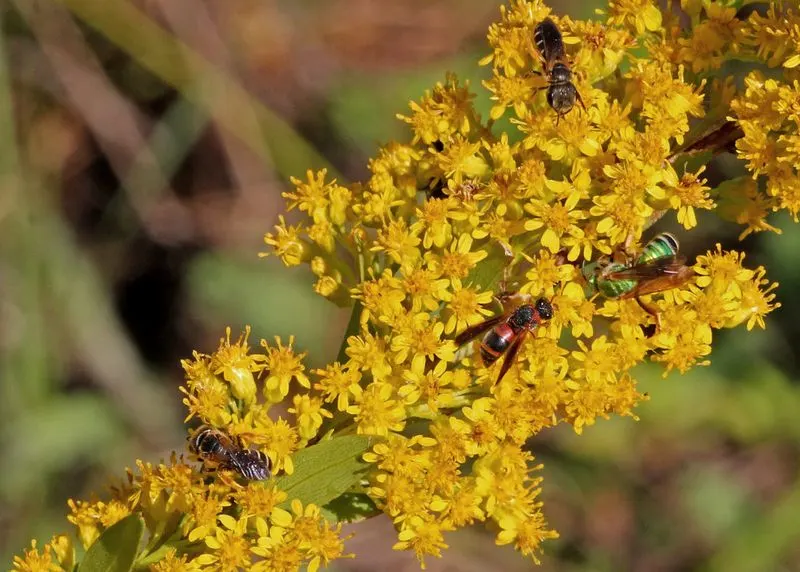
Seaside Goldenrod stands tall with clusters of bright yellow flowers, a striking presence in sandy coastal areas. Its late blooming season ensures color well into autumn, attracting pollinators when few other plants are flowering. Adapted to sandy, saline conditions, it thrives in challenging environments. Its robust nature makes it an excellent choice for dune stabilization. Beyond beauty, it supports local wildlife, providing food and habitat. Its vibrant display and ecological benefits make it a staple in coastal gardening.
Prickly Pear Cactus (Opuntia)
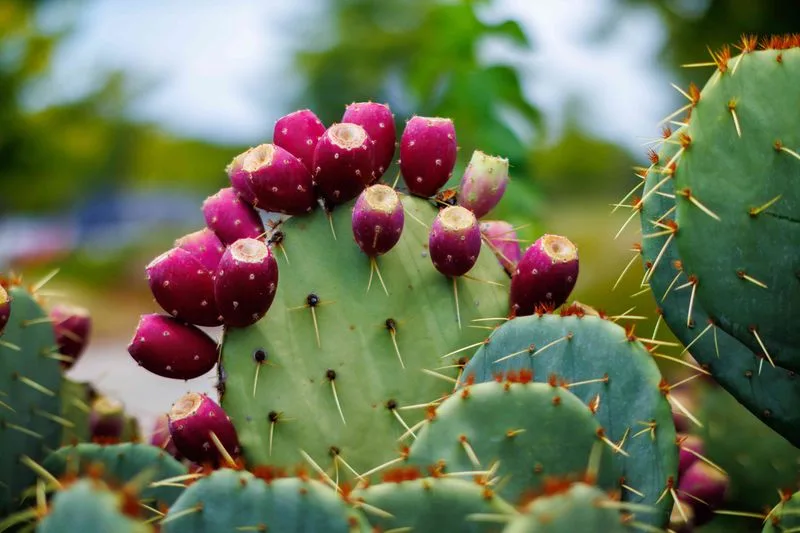
Prickly Pear Cactus surprises many with its ability to thrive in Maine’s sandy coastal areas. Its striking appearance, with spiky pads and yellow blooms, adds unique texture to gardens. This hardy cactus is well-adapted to dry, sandy soils, requiring minimal water. It blooms in late spring, its flowers attracting bees and other pollinators. Beyond aesthetics, it’s edible, with pads and fruit used in various culinary dishes. Resilient and low-maintenance, it brings a touch of the unexpected to coastal landscapes.
Seaside Daisy (Erigeron glaucus)
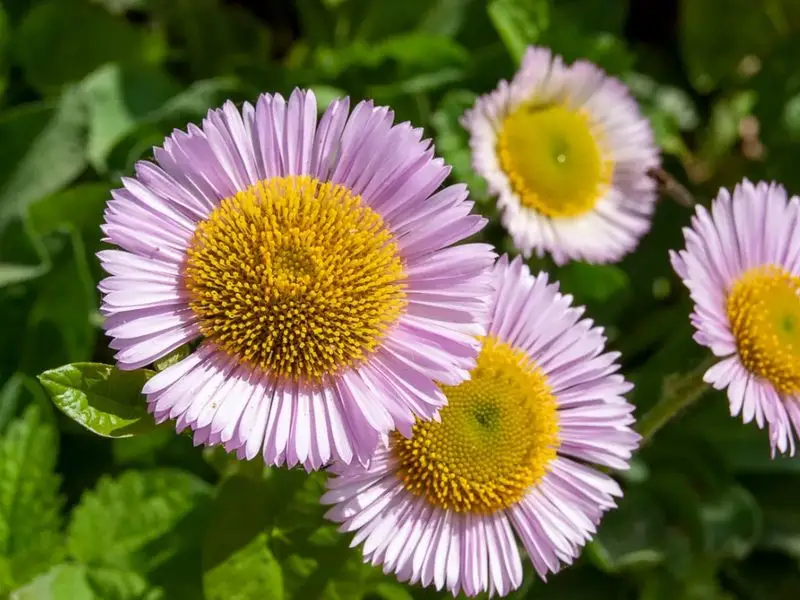
Seaside Daisy brings joy with its cheerful purple petals and sunny yellow centers. This charming perennial thrives in sandy soils, making it ideal for coastal gardens. Blooming from spring to summer, it provides continuous color and attracts butterflies. Its compact form suits borders and containers, adding versatility to garden designs. Tolerant of salt spray and poor soils, it’s a resilient choice for challenging environments. Easy to care for, it rewards gardeners with vibrant blooms and minimal fuss.
Coastal Joe-Pye Weed (Eutrochium dubium)
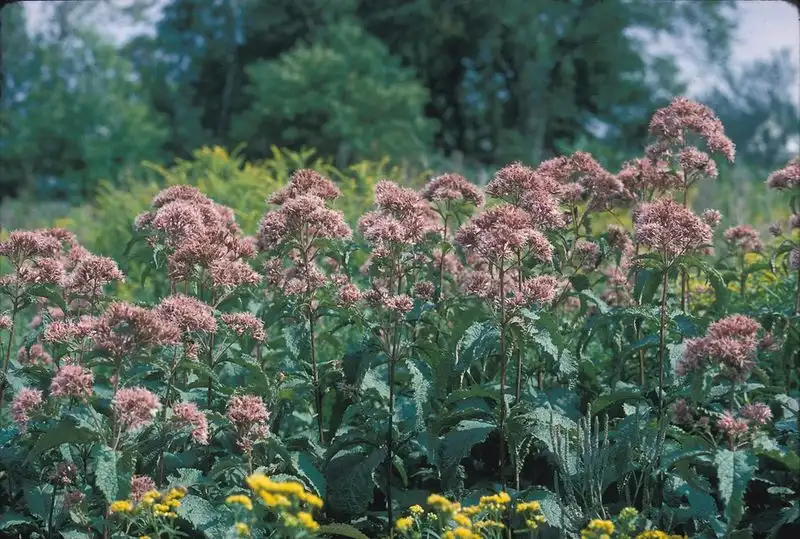
Coastal Joe-Pye Weed towers with its clusters of pinkish-purple blooms, a striking addition to sandy wetlands. It flourishes in moist, sandy soils, adding height and structure to gardens. Blooming from midsummer to early fall, it attracts butterflies and other pollinators. This native perennial supports local ecosystems, providing nectar and habitat. Despite its towering presence, it’s low-maintenance, requiring little more than occasional watering. Its vibrant flowers and ecological benefits make it a valuable coastal plant.
Moonlit Sea Poppy

The Moonlit Sea Poppy, with its ethereal glow, captures hearts with its delicate, shimmering white petals. Imagine a moonlit night where these flowers seem to illuminate the coastal sands, casting a gentle, magical glow. These poppies thrive in the sandy soils along Maine’s coast, perfectly adapted to the salty breeze and occasional sea spray. Their unique ability to bloom under moonlight makes them an enchanting addition to any evening garden. Did you know? The Moonlit Sea Poppy is believed to have mystical properties, often associated with dreams and tranquility. It’s a true coastal treasure.

